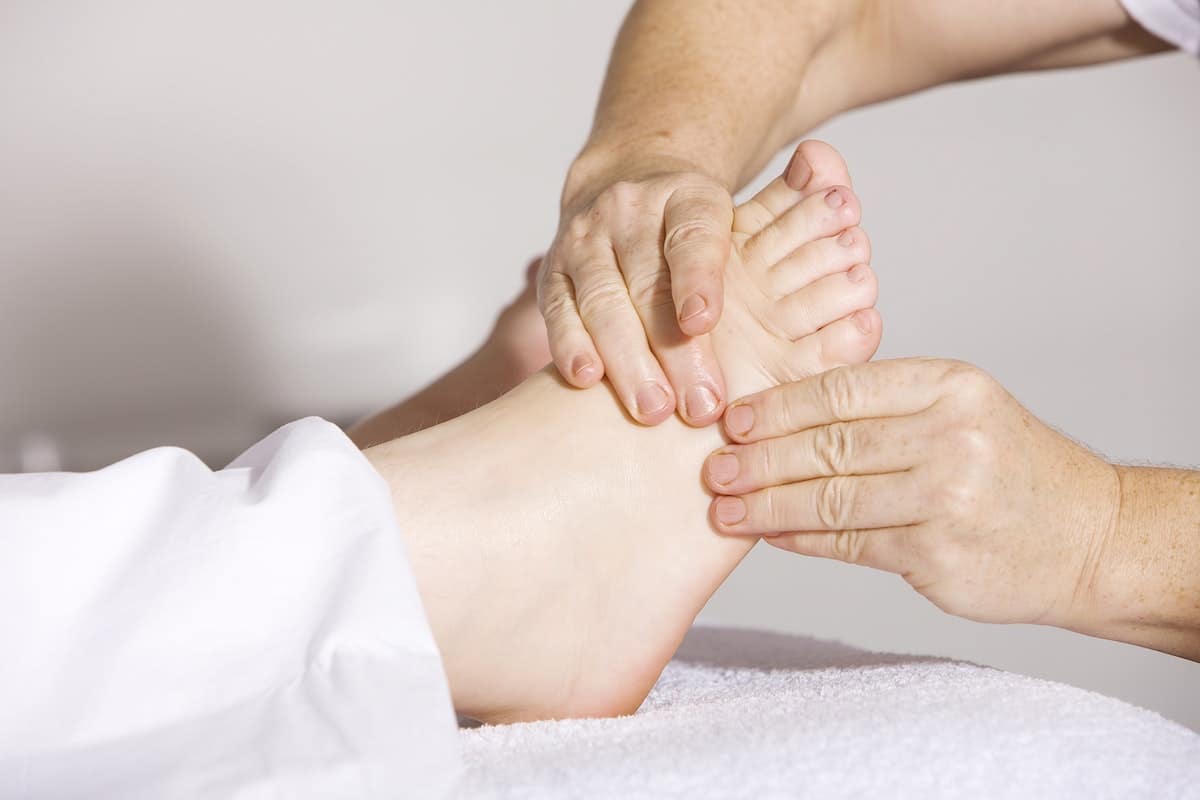
Optimizing Cold Tub Therapy: Finding the Ideal Temperature
Optimizing Cold Tub Therapy: Finding the Ideal Temperature
Overview
What is Cold Tub Therapy?
Cold tub therapy, also known as cold water immersion therapy, is a popular recovery technique used by athletes and fitness enthusiasts. It involves immersing the body in cold water for a certain period of time to help reduce inflammation, relieve muscle soreness, and enhance recovery. The ideal temperature for cold tub therapy is typically between 50 to 59 degrees Fahrenheit. This temperature range is considered optimal for triggering the body's natural healing processes without causing excessive discomfort. However, it's important to note that individual preferences may vary, and some people may find lower or higher temperatures more effective for their specific needs. Regardless of the temperature, it's recommended to gradually acclimate to the cold water and limit the duration of each session to avoid any potential adverse effects.
Benefits of Cold Tub Therapy
Cold tub therapy, also known as cold water immersion, is a popular recovery technique among athletes and fitness enthusiasts. It involves immersing the body in cold water for a certain period of time, usually between 5 to 15 minutes. This therapy offers a range of benefits, including reducing muscle soreness, decreasing inflammation, improving circulation, and enhancing overall recovery. The cold temperature helps constrict blood vessels, which can reduce swelling and inflammation in the muscles. It also helps to flush out lactic acid and other metabolic waste products, which can contribute to muscle soreness. Additionally, cold tub therapy can improve circulation by causing blood vessels to constrict and then dilate, which can enhance nutrient delivery to the muscles. Overall, incorporating cold tub therapy into your recovery routine can help you recover faster and perform better.
How Does Cold Tub Therapy Work?
Cold tub therapy, also known as cold water immersion, is a popular recovery technique used by athletes and fitness enthusiasts. It involves immersing the body in cold water for a certain period of time, typically between 10 to 20 minutes. The cold temperature of the water helps to reduce inflammation and muscle soreness, while also promoting faster recovery. When you expose your body to cold water, it constricts the blood vessels, which helps to flush out waste products and toxins from the muscles. This process, known as vasoconstriction, helps to reduce swelling and inflammation. Additionally, cold tub therapy stimulates the production of endorphins, which are natural painkillers that can help alleviate post-workout soreness. Some of the most important keywords in this paragraph are cold tub therapy, cold water immersion, recovery technique, athletes, fitness enthusiasts, inflammation, muscle soreness, faster recovery, blood vessels, waste products, toxins, vasoconstriction, swelling, endorphins, natural painkillers, post-workout soreness.
Finding the Ideal Temperature

Why Temperature Matters
When it comes to cold tub therapy, temperature plays a crucial role in its effectiveness. The ideal temperature for cold tub therapy is around 50 to 59 degrees Fahrenheit. This temperature range is considered optimal because it helps to constrict blood vessels and reduce inflammation. Cold tub therapy at lower temperatures can be too intense and uncomfortable, while higher temperatures may not provide the desired therapeutic benefits. It is important to find the right balance to maximize the benefits of cold tub therapy. So, remember, temperature matters!
Recommended Temperature Range
When it comes to cold tub therapy, finding the ideal temperature is key. The recommended temperature range for cold tub therapy is typically between 50 to 59 degrees Fahrenheit. This range is considered optimal for achieving the desired therapeutic benefits. It is important to note that individual preferences may vary, so it's always a good idea to start at a slightly lower temperature and gradually increase it to find what works best for you. The cold temperature helps to reduce inflammation, alleviate muscle soreness, and enhance recovery. By immersing yourself in the cold tub within this temperature range, you can experience the full benefits of cold tub therapy.
Factors to Consider
When it comes to optimizing cold tub therapy, there are several factors to consider. First and foremost is the temperature of the water. The ideal temperature for cold tub therapy is typically around 50 to 59 degrees Fahrenheit. This temperature range helps to constrict blood vessels and reduce inflammation in the body. However, it's important to note that individual preferences may vary, and some people may find slightly higher or lower temperatures more comfortable. Another factor to consider is the duration of the therapy session. It is recommended to start with shorter sessions, around 5 to 10 minutes, and gradually increase the time as your body gets accustomed to the cold. Additionally, the frequency of the therapy sessions is important. It is generally recommended to have cold tub therapy sessions 2 to 3 times per week for optimal results. Lastly, it's crucial to listen to your body and adjust the temperature and duration based on how it feels. Pay attention to any discomfort or adverse reactions and make necessary adjustments. By considering these factors, you can optimize your cold tub therapy experience and maximize its benefits.
Optimizing the Cold Tub Experience

Preparation and Safety Measures
Before starting cold tub therapy, it is important to take some preparation and safety measures. First, make sure to consult with a healthcare professional to ensure that cold tub therapy is safe for you. It is also recommended to start with shorter sessions and gradually increase the duration as your body becomes accustomed to the cold temperature. Additionally, always check the temperature of the water before getting in to ensure it is within the recommended range. It is also important to have someone nearby to assist you in case of any emergencies. Lastly, listen to your body and stop the therapy if you experience any discomfort or adverse effects.
Duration of Cold Tub Therapy
When it comes to cold tub therapy, finding the ideal duration is crucial. While some may believe that longer is better, it's important to strike a balance. Spending too much time in a cold tub can lead to overexposure and potential negative effects on the body. On the other hand, if the duration is too short, the therapeutic benefits may not be fully realized. The key is to listen to your body and gradually increase the duration over time. Start with shorter sessions of around 5 minutes and gradually work your way up to 10-15 minutes. Pay attention to how your body responds and adjust accordingly. Remember, the goal is to optimize the therapy for maximum benefits.
Combining Cold Tub Therapy with Other Techniques
Cold tub therapy, also known as cold water immersion, can be enhanced by combining it with other techniques. One popular combination is cold tub therapy with contrast therapy. Contrast therapy involves alternating between hot and cold treatments to promote circulation and reduce inflammation. By incorporating contrast therapy into cold tub therapy, individuals can experience enhanced benefits. Another technique that can be combined with cold tub therapy is cryotherapy. Cryotherapy involves exposing the body to extremely cold temperatures for a short period of time. By incorporating cryotherapy into cold tub therapy, individuals can further enhance the therapeutic effects. Additionally, combining cold tub therapy with massage therapy can help relax muscles and improve recovery. Overall, combining cold tub therapy with other techniques can maximize its effectiveness and provide a more comprehensive approach to recovery and wellness.
Common Mistakes to Avoid

Extreme Temperatures
When it comes to cold tub therapy, extreme temperatures play a crucial role in its effectiveness. The ideal temperature for cold tub therapy is typically between 50 to 59 degrees Fahrenheit. This temperature range provides the perfect balance between cold exposure and comfort. Temperatures below 50 degrees Fahrenheit may be too cold and uncomfortable, while temperatures above 59 degrees Fahrenheit may not provide the desired therapeutic benefits. It's important to find the sweet spot within this temperature range to optimize the benefits of cold tub therapy.
Ignoring Personal Comfort
When it comes to cold tub therapy, one of the biggest mistakes people make is ignoring their personal comfort. It's easy to get caught up in the idea that colder is always better, but that's not necessarily the case. Everyone's tolerance for cold temperatures is different, and pushing yourself too far can actually be counterproductive. The key is to find the ideal temperature that provides the most benefit without causing unnecessary discomfort. By listening to your body and adjusting the temperature accordingly, you can optimize the effectiveness of cold tub therapy.
Not Monitoring the Time
Another common mistake when using cold tub therapy is not monitoring the time. It's easy to get caught up in the relaxing and soothing effects of the cold water, but it's important to remember that there is such a thing as too much of a good thing. Spending too much time in a cold tub can actually be counterproductive and potentially harmful. It's recommended to limit cold tub sessions to around 10-15 minutes to avoid any negative effects. By monitoring the time and setting a timer, you can ensure that you're getting the most out of your cold tub therapy without overdoing it.
Conclusion
The Importance of Finding the Ideal Temperature
When it comes to cold tub therapy, finding the ideal temperature is crucial for maximizing its benefits. The temperature of the cold tub can greatly impact the effectiveness of the therapy session. If the temperature is too high, it may not provide the desired therapeutic effects, while if the temperature is too low, it can lead to discomfort and potential health risks. The ideal temperature for cold tub therapy is typically between 50 to 59 degrees Fahrenheit. This temperature range allows for optimal recovery and reduces the risk of injury. It is important to note that individual preferences may vary, and it is recommended to start at a lower temperature and gradually increase it to find the ideal temperature that works best for you.
Experiment and Listen to Your Body
When it comes to optimizing cold tub therapy, it's important to experiment and listen to your body. Everyone's tolerance to cold temperatures is different, so what works for one person may not work for another. Start by trying different temperatures and durations for your cold tub sessions. Pay attention to how your body responds and adjust accordingly. If you feel uncomfortable or experience any negative effects, such as excessive shivering or numbness, it's a sign that the temperature is too cold for you. On the other hand, if you don't feel any benefits from the therapy, you may need to decrease the temperature or increase the duration. It's all about finding the ideal temperature and duration that works best for you. Remember, there is no one-size-fits-all approach to cold tub therapy.
Cold Tub Therapy as a Personalized Experience
When it comes to cold tub therapy, finding the ideal temperature is crucial. Everyone's body is different, so what works for one person may not work for another. It's a personal experience that requires experimentation and customization. Some people prefer a colder temperature, around 50 degrees Fahrenheit, while others find that a slightly warmer temperature, around 60 degrees Fahrenheit, is more comfortable. The key is to find the temperature that provides the desired benefits without causing discomfort or pain. Experimenting with different temperatures and listening to your body is the best way to optimize your cold tub therapy experience.


